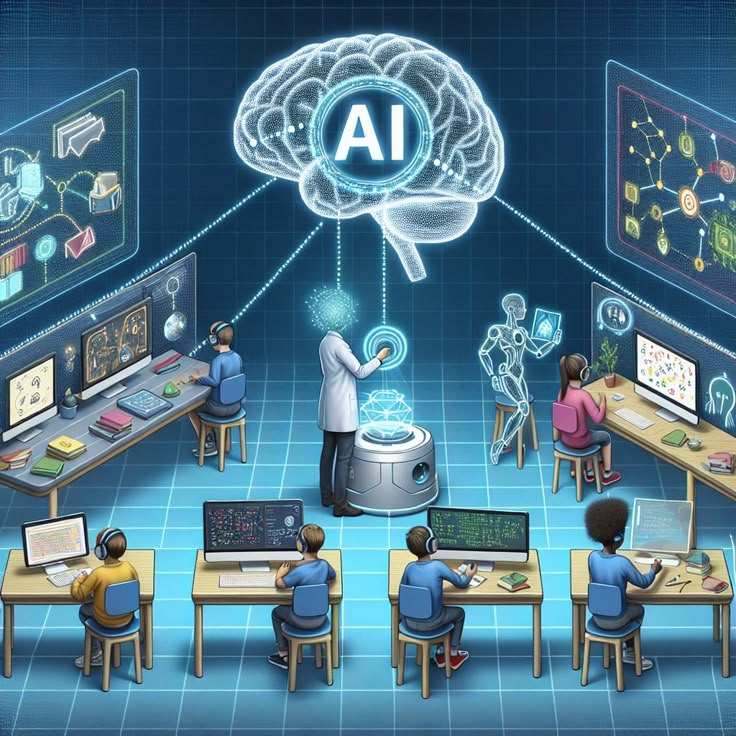In classrooms across the world, a quiet revolution is underway, and it doesn’t involve new textbooks or smartboards. It’s the rise of artificial intelligence, or AI in education, particularly tools like ChatGPT, which are reshaping how students learn, study, and even complete assignments.

While AI offers undeniable advantages, it also raises an important question:
Are we empowering learners, or are we enabling academic shortcuts?
This article explores the growing impact of AI on today’s education system, from its benefits to its ethical challenges.
AI Tools: The New Study Buddy?
AI has entered education in many forms, from grammar checkers to math solvers to full-fledged essay generators. Chat GPT, Claude, and many more AI tools are available in the market with easy access. AI can:
- Summarize complex articles
- Generate essay drafts
- Translate languages
- Write code
- Explain difficult concepts in simpler terms
For students, it feels like having an all-in-one tutor on demand. For educators, however, the lines between learning and “outsourcing your brain” are becoming blurry.
Learning vs. Copying: Where’s the Line?
Let’s face it — students have always looked for shortcuts. In the past, it was CliffsNotes or asking a friend. Today, it’s typing a prompt into ChatGPT.
But here’s the problem: unlike past methods, AI doesn’t just summarize — it can create entire assignments.
This sparks a dilemma:
- Is using AI to help outline your essay cheating?
- What if you use it to fix grammar or rephrase answers?
- Can teachers even tell the difference?
Right now, there are more questions than answers.
Teachers on the Frontlines
Educators are trying to adapt — and fast. Some are:
- Updating academic honesty policies
- Using AI detection tools (with mixed results)
- Redesigning assignments to emphasize in-class thinking
- Encouraging students to be transparent about using AI
But many teachers feel like they’re in a cat-and-mouse game, where AI improves faster than schools can catch up.
Rethinking Education Itself
Perhaps the real solution isn’t in banning AI, but rethinking how we teach and assess.
What if instead of memorizing and regurgitating information, the focus can be on:
- Critical thinking
- Creativity
- Real-world problem-solving
- Collaboration and discussion
AI can still have a role — as a tool, not a crutch.
Imagine assignments where students:
- Compare their AI-generated answer to their own
- Reflect on what the AI got right — or wrong
- Collaborate with peers using AI as a conversation starter
This turns AI from a cheating risk into a learning opportunity.
Ethics and Equity: Who Gets to Use AI?
There’s also a deeper issue: not every student has equal access to AI.
- Some can afford premium tools like ChatGPT Plus or AI writing software.
- Others may not have internet access at all.
- In some classrooms, AI use is allowed — in others, it’s punished.
This inconsistency could widen the achievement gap if not addressed thoughtfully.
The Way Forward: Adapt, Don’t Panic
Like calculators, spellcheck, and the internet before it, AI is here to stay.
Instead of banning it outright, schools and teachers should:
- Set clear, realistic guidelines around acceptable use
- Educate students on ethical, responsible AI use
- Focus on skills AI can’t replicate — like empathy, originality, and critical judgment
- Design assignments that encourage independent thinking
- Create equity in AI access and support
Final Thoughts
AI is neither the enemy nor the savior of education. It’s a tool; a powerful one, but only as useful (or harmful) as how we choose to use it.
For students, it offers new ways to learn, explore, and grow.
For educators, it demands a shift in mindset — from control to guidance, from information delivery to skill development.
As we step into the future of learning, one thing is clear: the classrooms that embrace change with intention and care will be the ones that thrive.


 Can OpenAI’s ChatGPT-Powered Browser Challenge Google?
Can OpenAI’s ChatGPT-Powered Browser Challenge Google?  Grok Banned in Turkey Over Insults to President Erdogan
Grok Banned in Turkey Over Insults to President Erdogan  What’s New in Australia’s International Student Policy?
What’s New in Australia’s International Student Policy?  Did Trump Halt Harvard’s Foreign Enrollment?
Did Trump Halt Harvard’s Foreign Enrollment?  Mizoram Becomes India’s First Fully Literate State
Mizoram Becomes India’s First Fully Literate State  Google Launches $250/Month AI at I/O 2025
Google Launches $250/Month AI at I/O 2025